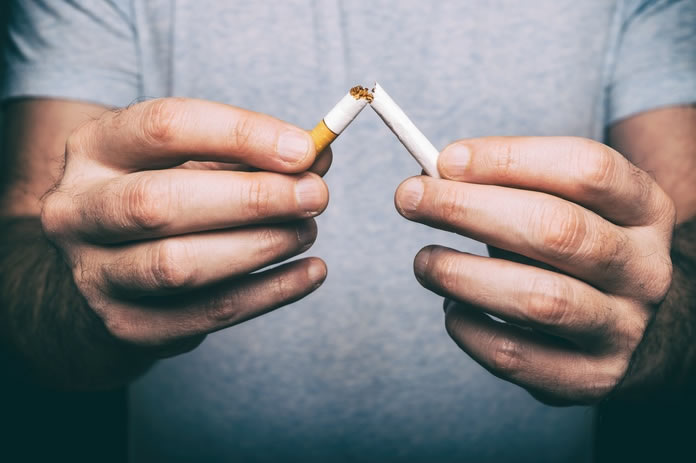Smoking Cessation

SMOKING CUTTING PROGRAM
Clínica Eupnea Palamós offers a smoking cessation program to those patients who wish to quit smoking.
Quitting smoking is possible if you are aware of how to do it and have help.
The program consists of:
- A first visit where the diagnosis of smoking and its characteristics is made.
- A medical examination: spirometry, radiography and measurement of exhaled carbon monoxide.
- A schedule or number of follow-up visits needed to increase treatment success. This will depend on the degree of dependence of the smoker.
- Intervention by more than one healthcare professional (pulmonologist, cardiologist, physiotherapist or psychologist), as the case may be.
- Support material, group sessions and other help and communication tools.
- Pharmacological treatment in necessary cases and specialized psychological support for each patient according to their needs.

WHY QUIT SMOKING?
Smoking is a chronic disease that, in most cases, begins before the age of 18. In addition, it is considered an addictive disease due to the high dependence produced by nicotine from tobacco. Apart from nicotine, tobacco has an endless amount of harmful substances for our health, such as: carbon monoxide, tar, sugar, ammonium, etc.
Some of the main complications caused by smoking are:
- Cardiovascular problems: ischemic heart disease, cerebrovascular disease, aortic aneurysm, etc.
- Respiratory problems: such as emphysema, chronic bronchitis or COPD, among others.
- It is also the main cause of different tumors, especially located in the lungs or respiratory tract. Currently 3 out of 4 cases of lung cancer are developed by smokers.
The WHO estimates that around 8 million people die annually from tobacco, whether they are active or passive smokers.
For all that, don’t think about it anymore. You have the solution to stop smoking at Clínica Eupnea Palamós.
What are the benefits of quitting smoking?
- Quitting smoking has various health benefits, such as reducing the risk of heart disease, improving lung capacity, lowering the risk of cancer, and enhancing overall quality of life.
What are the most effective methods to quit smoking?
- The most effective methods to quit smoking include nicotine replacement therapies, prescription medications, behavior therapies, and psychological support.
What are the most common withdrawal symptoms when quitting smoking?
- Withdrawal symptoms can include irritability, anxiety, insomnia, difficulty concentrating, increased appetite, and cravings for nicotine.
What can I do to manage cravings to smoke?
- You can manage cravings by using techniques such as deep breathing, engaging in physical activity, keeping busy with alternative activities, and seeking support from family or support groups.
What happens with weight when you quit smoking?
- Some people may experience a slight weight gain when they quit smoking, but maintaining a healthy diet and regular exercise can help control this.
What are the risks of relapse and how can I avoid them?
- Relapse risks are common, but you can avoid them by identifying trigger situations, seeking ongoing support, and developing strategies to cope with the urge to smoke.
How long do withdrawal symptoms typically last?
- Withdrawal symptoms can persist for a few weeks, but they usually improve over time. It’s important to stay strong and continue with support strategies.